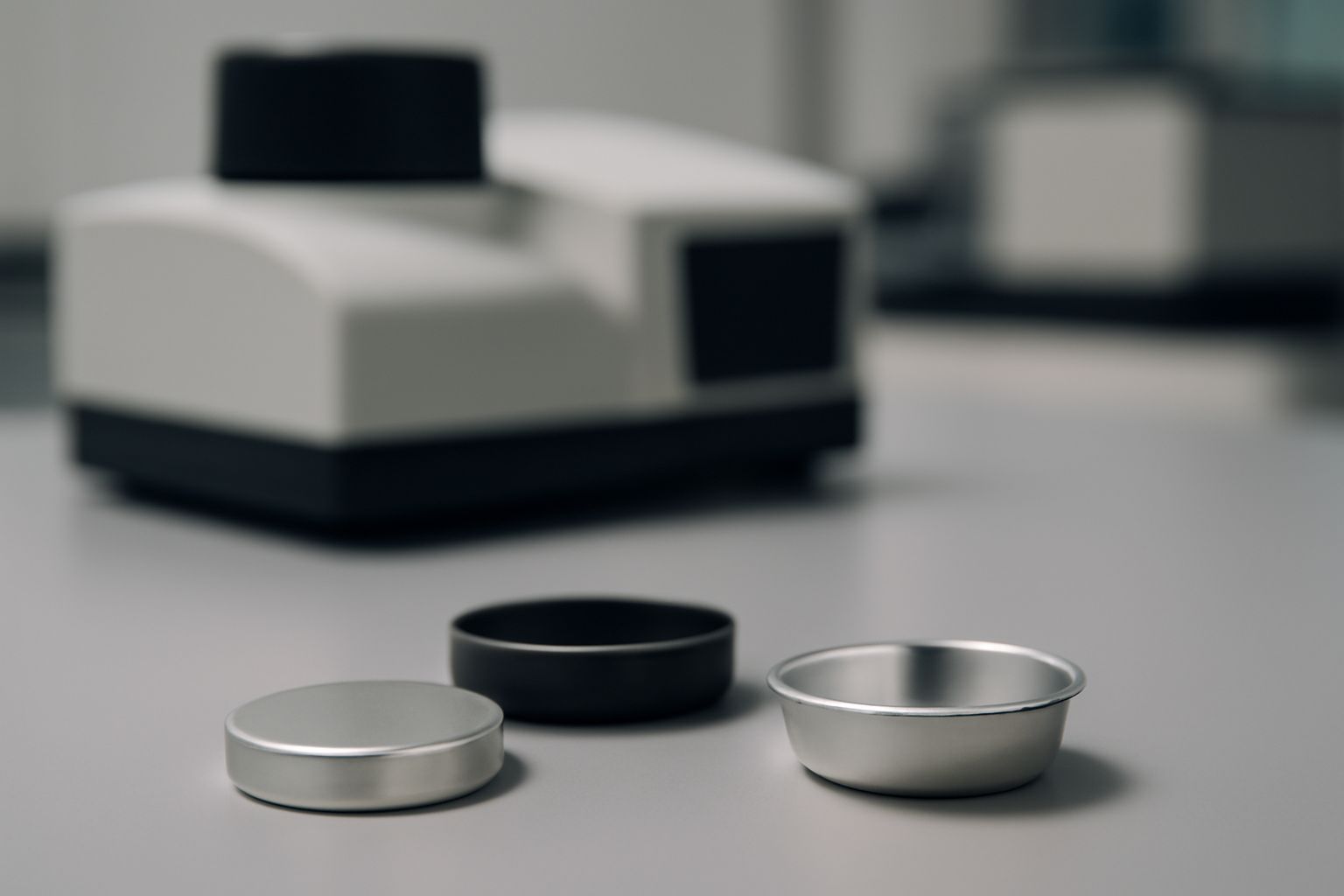Your cart is empty.
shop now
Your cart is empty.
shop now
Laboratories around the world face pressure to meet research goals faster and cheaper. Bulk DSC pans have become essential in many fields that rely on constant testing.
Bulk DSC pans are gaining ground in global markets because laboratories in materials science, pharmaceuticals, and electronics need efficient and cost-effective thermal analysis supplies. Manufacturers now scale production for better value, encouraging labs to switch from costly branded consumables.

As demand grows, I have seen suppliers rush to improve both compatibility and price. The structure of the market has shifted as bulk orders bring efficiencies that benefit labs everywhere. The following sections explore key trends, market evolution, the industries driving demand, and how this surge impacts production.
Laboratories need reliable supplies to keep up with rising sample workloads. Bulk DSC pans help keep costs down while supporting a growing number of thermal tests in modern labs.
The main trends driving this demand include the expansion of materials research, automation in laboratories, and greater focus on cost reduction in purchasing. These factors make bulk DSC pans a smart choice for high-throughput testing environments.
| Trend | Impact on Demand | Example |
|---|---|---|
| Lab Automation | Enables higher sample throughput; bulk pans reduce supply interruptions. | Automated DSC instruments running 24/7 in electronics R&D labs. |
| Materials Science Growth | Expanding research pipelines require more consumables for new projects. | Materials testing in polymers, alloys, and batteries fuels orders. |
| Procurement Optimization | Labs aim to buy in bulk to save money and ensure supply security. | Pharmaceutical QC labs shift from single-box to bulk carton purchases. |
| Sustainability Initiatives | Focus on efficient use and bulk packaging to reduce waste. | Bayer implements bulk buying to align with green lab targets. |
Rising demand pushes suppliers to increase output and offer better unit pricing. Volume orders make DSC pans more budget-friendly for laboratories of all sizes.
The DSC pan market is becoming more competitive as new manufacturers enter and existing brands boost their capacity. Larger order volumes mean lower prices per unit and quicker restocks. This benefits high-volume labs while suppliers tailor packs for different budgets.
| Region | Volume Growth | Price Trend (2022-2024) |
|---|---|---|
| United States | Strong bulk purchasing from universities and pharma companies. | Prices fell about 10% with increased supplier presence (Source: Transparency Market Research, 2023). |
| Germany | Industrial users demand large, frequent shipments. | More stable price reductions as competitors improve supply chains. |
| Japan | Consistent growth in advanced materials labs. | Steady prices; emphasis on premium compatibility and delivery speed. |
| Rest of World | Expansion in South Korea, UK, France, and Singapore. | Gradual decline in cost as local distributors join the market. |
Industries with strict testing needs and high sample turnover drive orders for bulk DSC pans. These include pharmaceuticals, advanced materials, electronics, and polymers.
The most active sectors use thermal analysis processes for both research and quality control. From drug formulation to electronic component testing, these industries rely on bulk consumables to maintain productivity and support new product development.
| Industry | Role of DSC Pans | Key Applications |
|---|---|---|
| Pharmaceuticals | Drug stability, melting point, compatibility studies. | DSC for formulation and stability testing. |
| Materials Science | R&D on polymers, metals, ceramics. | Thermal transitions in new material research. |
| Electronics | Testing PCB and component material properties. | Reliability and stress analysis for semiconductors. |
| Academic Research | Basic and applied thermal property experiments. | Training, student projects, novel material testing. |
| Food & Packaging | Analysis of fats and polymers. | Product development, shelf-life studies. |
Manufacturers now focus on ramping up output, improving compatibility, and refining packaging for bulk buyers. This pushes factories to invest in better automation and quality control.
Expanding orders force producers to modernize assembly lines, source purer metals, and deliver more reliable pans. According to a 2022 ACS Omega report, some suppliers have doubled their daily output since 2021. Producers also use digital QC tools to meet international standards and cut down on waste, improving consistency for end users.
| Production Factor | Improvement Impact | Recent Data/Trends |
|---|---|---|
| Automation Investments | Higher output, lower unit costs, less labor error. | Many leading brands now use automated stamping lines. |
| Raw Material Sourcing | Better access to high-purity aluminum boosts product consistency. | Purity levels near 99.99% for high-end pans (Source: REDTHERMO internal data). |
| QC & Testing | Digital measurement tools keep dimensions tight. | Factory reject rates dropped 15% since 2020. |
| Packing & Logistics | Bulk packaging cuts shipping costs and damage. | Standard pack sizes now range from 20 to 1000 units. |